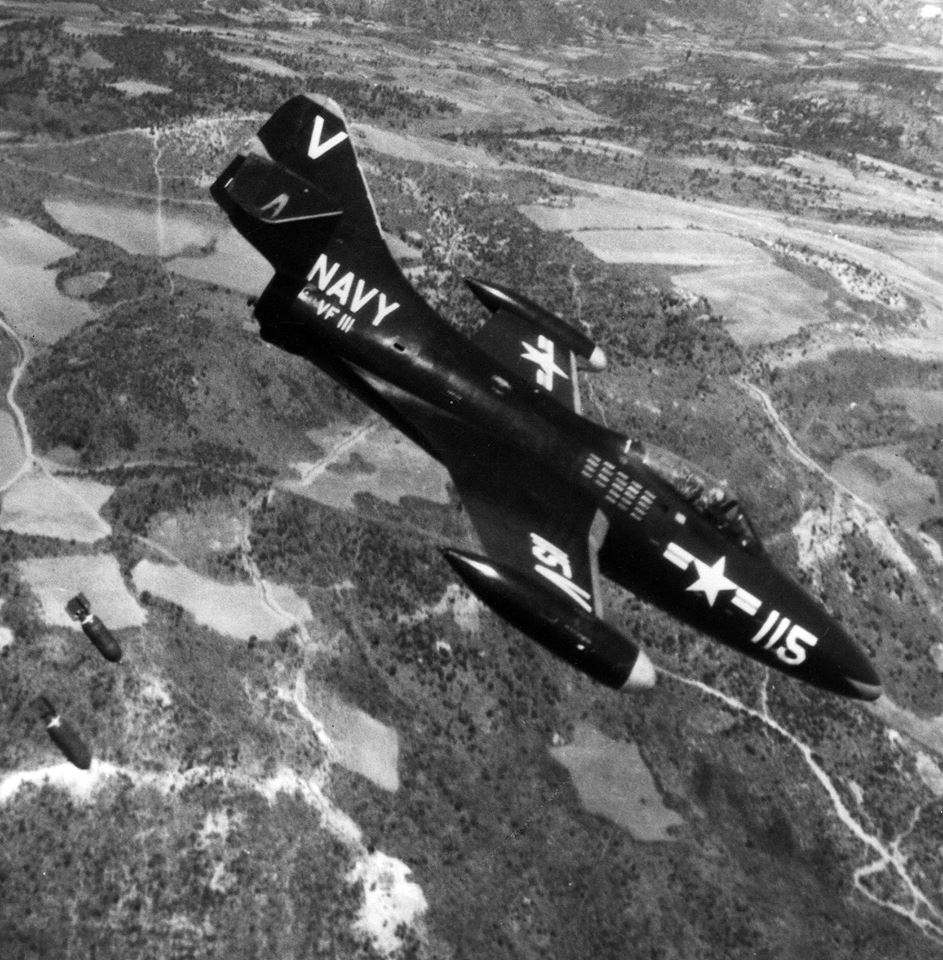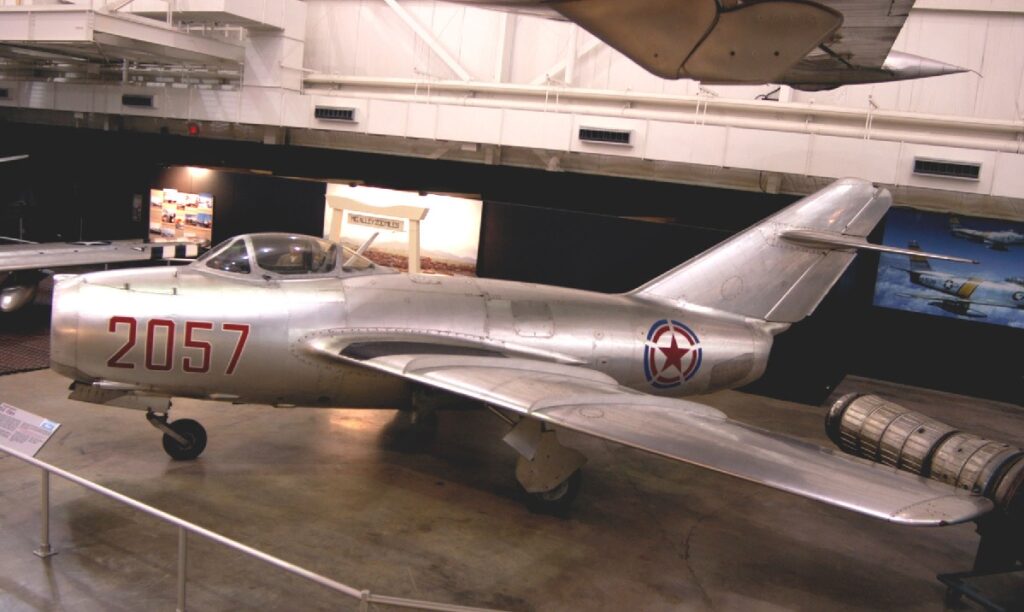When Lt. Cdr. Amen downed Grachev’s MiG-15, he made aviation history because he was the first pilot to win an all-jet dogfight.
For both sides of a war, the Korean War, which raged for three years from June 25, 1950, to July 27, 1953, witnessed the first significant use of fighter aircraft powered by jet engines.
These aircraft raised the speed and lethality of air combat. Compared to the previous piston engines, the jet engines delivered significantly better performance, including higher top speeds, cruise speeds that were twice as fast, higher ceilings, and sustained climb rates. In addition to the United States and its allies, North Korea and China also used fighter jets during the Korean War. Eventually, some of these aircraft were flown by Russian pilots.
On November 8, 1950, a U.S. Air Force F-80C from the 16th Fighter Squadron came into contact with a MiG-15 while attacking the Sinuiju bridges near the mouth of the Yalu River. This was the first time that fighter planes engaged in air-to-air combat. The Shooting Star’s 1st Lt. Russel Brown won the subsequent duel, making history as the first jet-to-jet fighter to accomplish it. Despite this, it was later found that his Russian opponent had safely returned to base, according to Barrett Tilman and Henk van der Lugt’s story in VF-11/111 Sundowners.
The first jet-vs-jet victory in history, however, wasn’t far off because it was achieved the next day by Lt. Cdr. William T. Amen, the commander of VF-111 Sundowners while a second assault on the Sinuiju bridges was undertaken on November 9, 1950, this time by U.S. Navy aircraft launched from the aircraft carrier USS Philippine Sea (CV-47).
Capt. Mikhail Grachev led the 1st Squadron into combat as the MiG-15s from the 139th GvIAP (Guards Fighter Air Regiment), which were in charge of defending the Sinuiju bridges, were scrambled to intercept the American attack aircraft. The action turned into a dogfight in and out of the clouds as the MiGs approached the American aircraft, attacking before Corsair and Skyraider fighter bombers.
Amen, who was flying the Leading Flying Target CAP (Combat Air Patrol) mission in a VF-112 Grumman F9F-2B Panther (the VF-112 was the VF-111 sister squadron aboard the Philippine Sea, and it was not uncommon for maintenance reasons that the two Panther squadrons on the same ship fly each other’s aircraft interchangeably.), noticed a closing unknown aircraft while checking his tail in the middle of the furball. He turned his VF-111 section immediately in the direction of the bogey. After performing a climb from 4,000 to 15,000 feet, the MiG, which was being piloted by Grachev, yawed in an attempt to locate the F9Fs. By doing this, Grachev gave Amen and his wingman George Holloman the opportunity to close the gap between them and start firing at his MiG, which both US pilots struck.
Amen struggled to keep up with Grachev’s vertical descent. Nevertheless, Amen was able to fire as the MiG entered his line of sight, putting more 20mm bullets into the target, despite his Panther entering buffet as it approached the terminal velocity and requiring him to counter the rudder reversal.
Both Grachev and Amen began to endure at around 3,000 feet, with the latter being able to reclaim his Panther at just 200 feet. Amen lost sight of the MiG during this heavy G maneuver, but Holloman saw it collide with a hillside and explode in a massive flame, leaving Mikhail Grachev with no hope of surviving.
After the battle, the Russians thought they had shot down at least five or six American planes, however, none of them were lost, due to the 139th GvIAP’s unreliable flying.
Instead, Amen became the first air-to-air winner in an all-jets dogfight when he downed Grachev’s MiG-15, making aviation history.
Remarkably, the Sundowners were renamed VFC-111 in 2007, with VFC standing for Fighter Composite Squadron. Since that time, they flew the Northrop F-5N Tiger II and provided Dissimilar Air Combat Training (DACT) for all U.S. Navy and Marine Corps fleet replacement units. Ironically, the Sundowners fly replicating the flight characteristics of the adversary they helped defeat after downing the first MiG in the first jet vs jet battle.

Photo by U.S. Navy, U.S. Air Force


